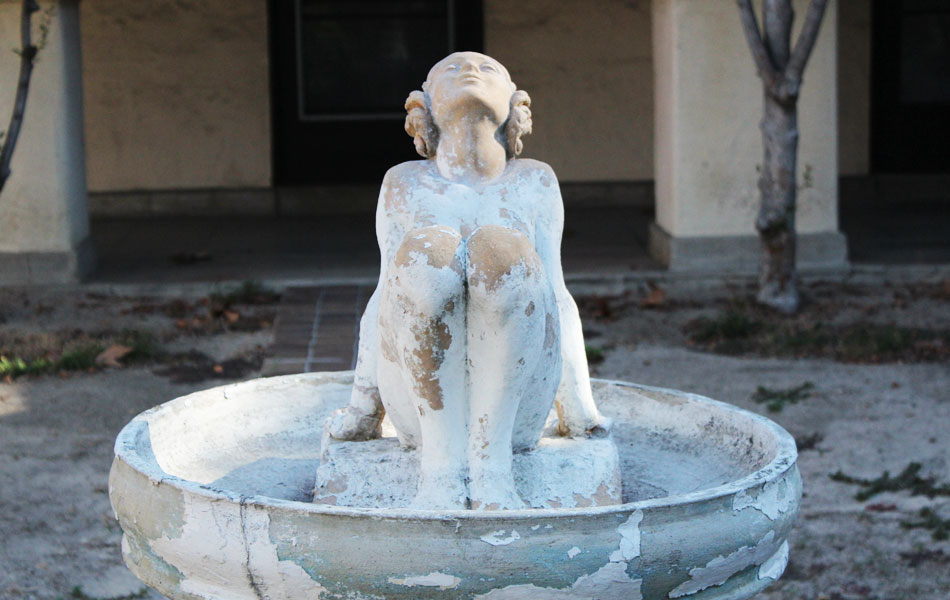
The future of Rockhaven is, sadly, now up in the air. And while there were originally plans to turn the historic location into a community center and public park, when the economy took a downturn, that project had to be put on hold. When the city of Glendale purchased the site for $8.25 million in April 2008, they gathered together all of the lost belongings and put them into storage for safe keeping. In a bit of a macabre twist, when Rockhaven was shuttered, for whatever reason, many patients’ belongings were left behind as if their owners were planning to return – clothes remained hanging in closets, greeting cards and flowers stood on shelves, and framed photos lingered on nightstands. Ararat transformed the property into a nursing home, but, claiming it was too difficult to maintain, wound up closing its doors in 2006. Patricia continued to run the facility until 2001, when she retired and sold it to the Ararat Home of Los Angeles. Thanks to the fact that residents were taken on regular excursions, rooms were decorated by interior designers, holidays were celebrated, and patients allowed to wear their normal clothing, Rockhaven was a place where troubled souls could lead normal, even happy lives.Īs Richards began to gradually withdraw from running Rockhaven in 1956, her granddaughter, Patricia Traviss, took over daily operations. Richards believed that beautiful surroundings were necessary to the healing process and Rockhaven was nothing if not idyllic.Īs depicted in the documentary “Rockhaven: A Sanctuary from Glendale’s Past,” which won a Los Angeles Area Emmy Award, the sanitarium was not your typical mental health facility. The gorgeous grounds, which won a landscaping award in 1966, featured gardens, towering oak trees, grottos, ponds, flowerbeds, fountains, shaded patios, statuaries, and meandering footpaths.


ROCKHAVEN SANITARIUM PROFESSIONAL
By 1940, the expanded site, which was one of California’s first private mental health institutions, consisted of 15 Craftsman and Spanish Revival-style buildings, 12 lots of land totaling 3.3 acres, facilities to treat over one hundred patients, a small hospital, a dining hall, and a professional kitchen. She also eventually bought the original stone dwelling. To house the growing number of residents, Richards began purchasing neighboring homes, as well as constructing new buildings on adjacent vacant land. She leased a two-story building with a stone façade (hence the name “Rockhaven”) on Honolulu Avenue in Montrose for $125 a month and took in six patients, whom she called “residents.” By the next year, the number of residents had grown to 24. After witnessing firsthand the poor treatment of the mentally ill while working in both San Bernardino’s Patton State Hospital and the Los Angeles County General Hospital (which is ironically where Gladys Baker gave birth to Norma Jean on June 1st, 1926), Richards decided to open her own “secluded sanctuary” to treat ailing women with dignity in a home-like setting.

Rockhaven Sanitarium, which was also known as the Screen Actors Sanitarium, was originally founded in January 1923 by a nurse named Agnes Richards. So I dragged the Grim Cheaper right on out to stalk it while the two of us were in L.A. My interest was immediately piqued, of course (y’all know how much this stalker LOVES herself some abandoned properties), and I thought the site would fit in perfectly with my Haunted Hollywood postings – especially once I discovered that none other than Gladys Baker Eley, mother of Miss Marilyn Monroe, called the place home for almost a decade and a half. Back in early September, while doing research on filming locations in Montrose, I came across this 2011 Crescenta Valley Weekly article about a vacant former mental institution named Rockhaven Sanitarium.


 0 kommentar(er)
0 kommentar(er)
